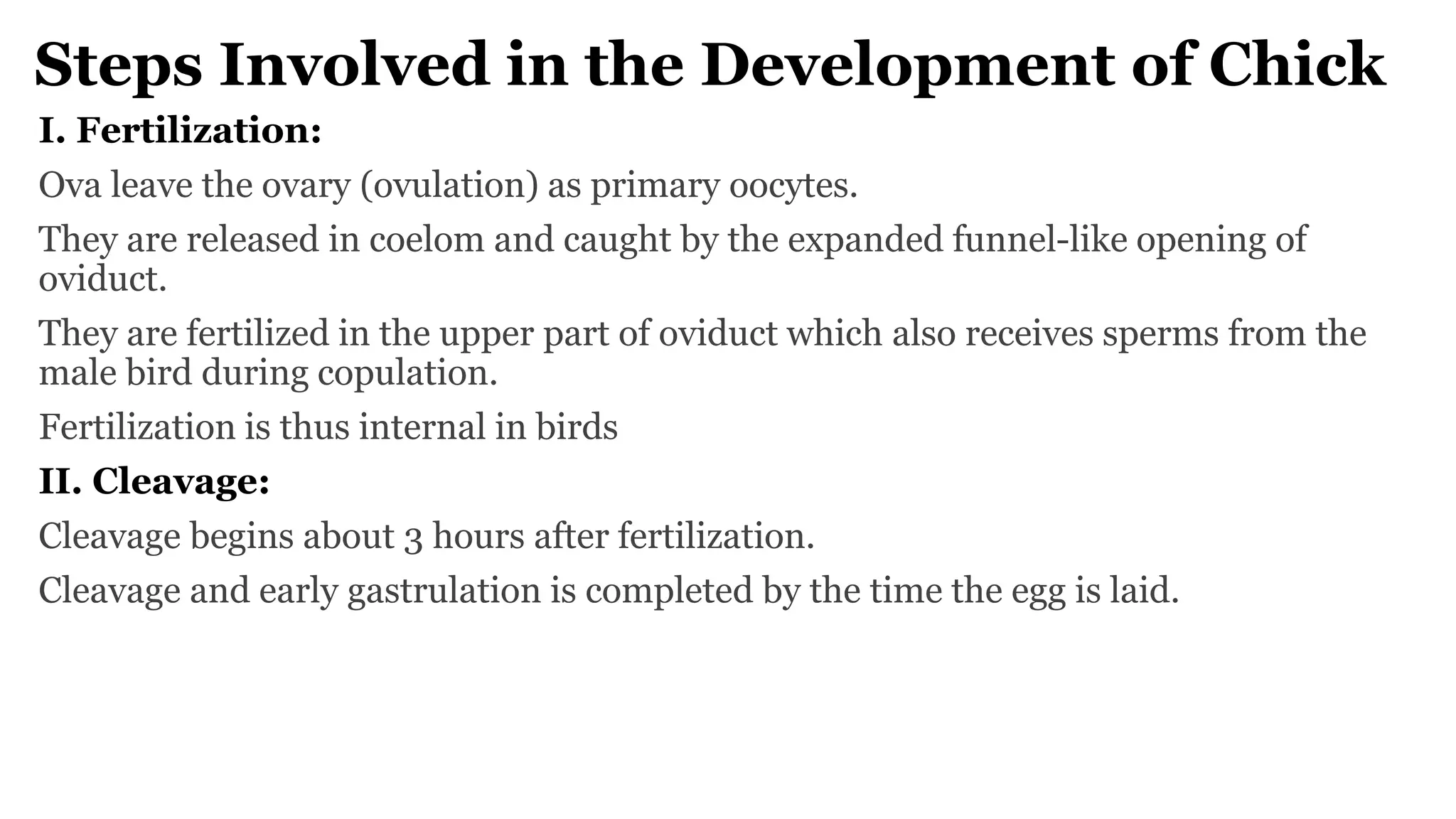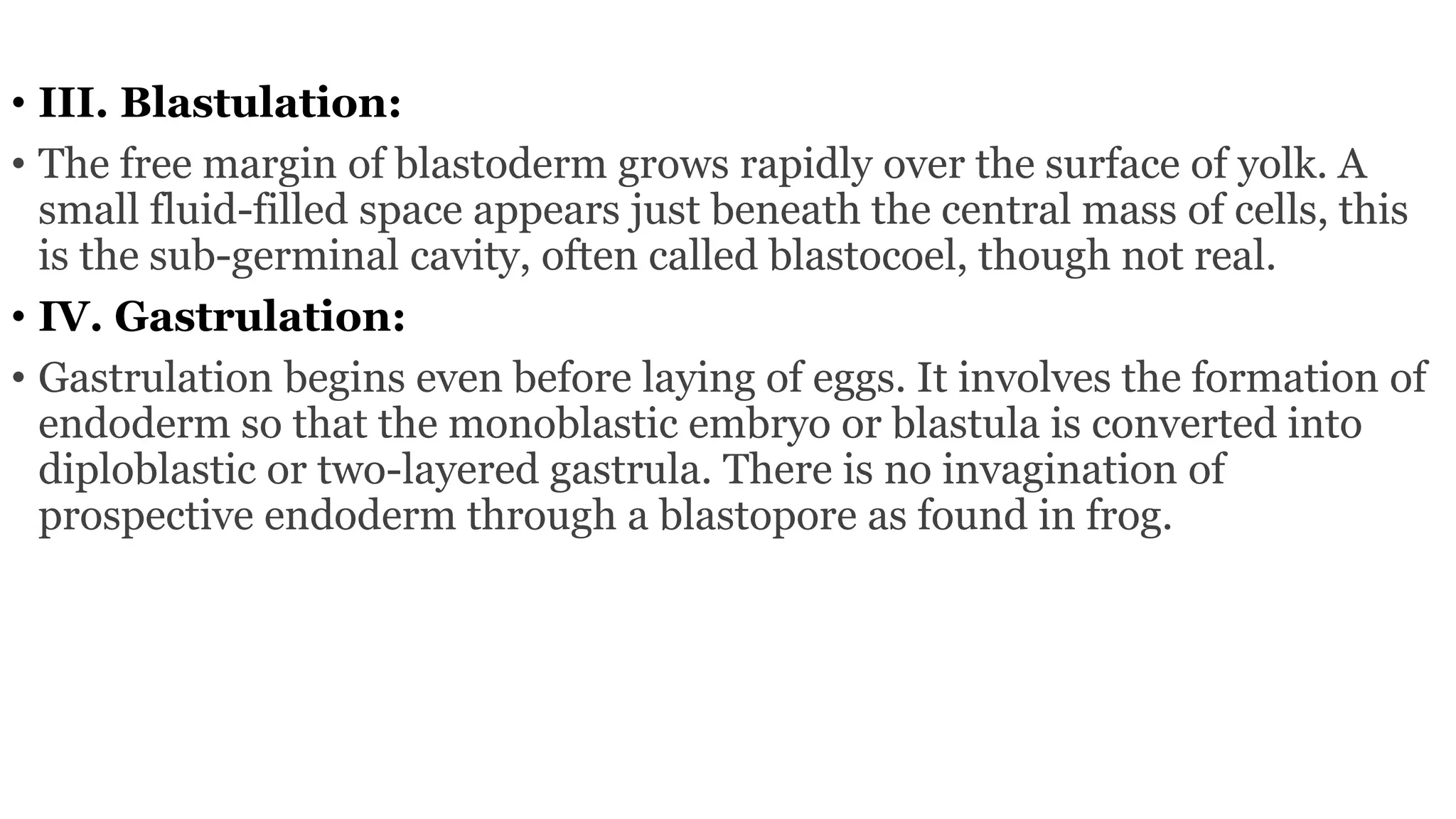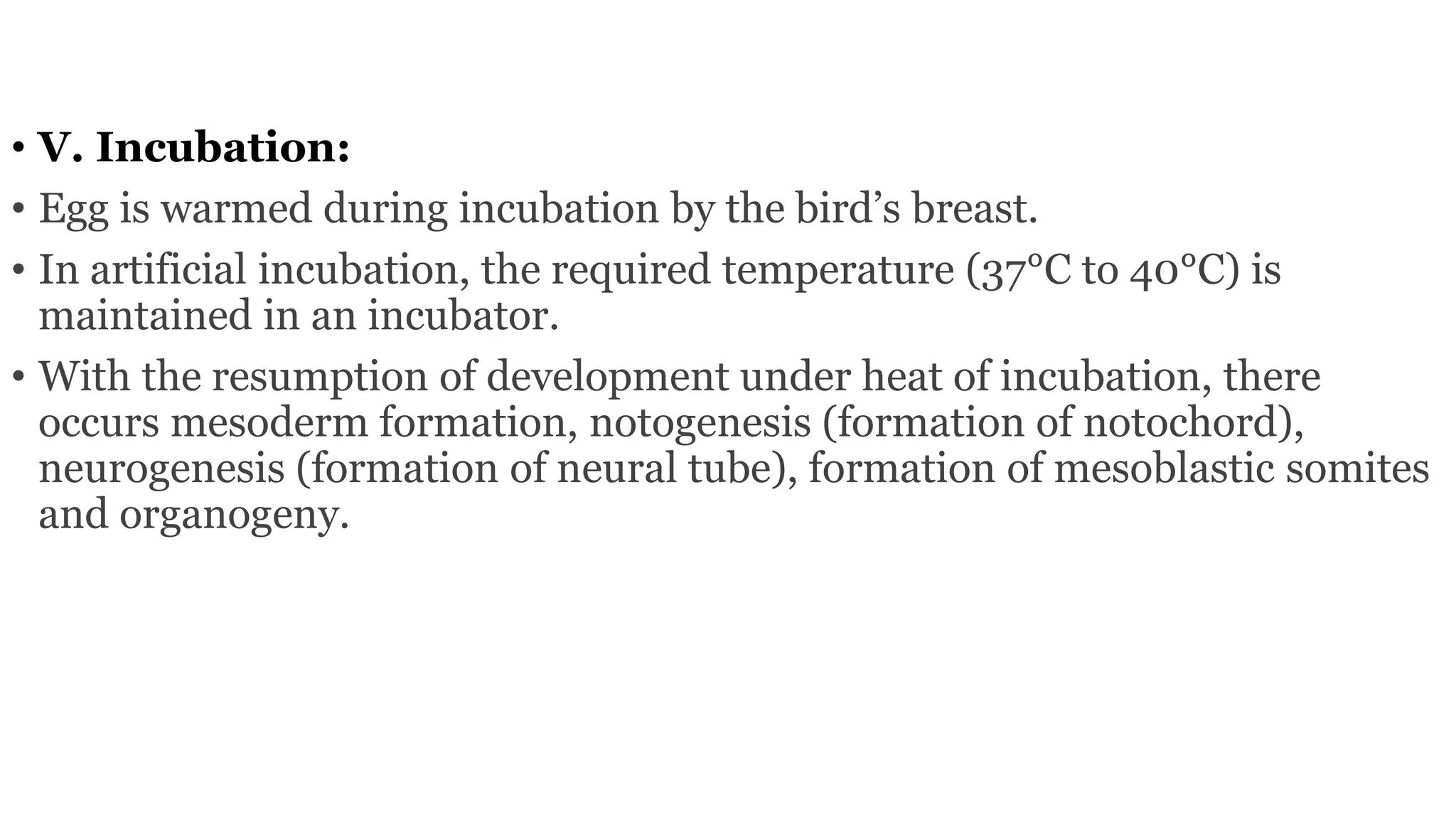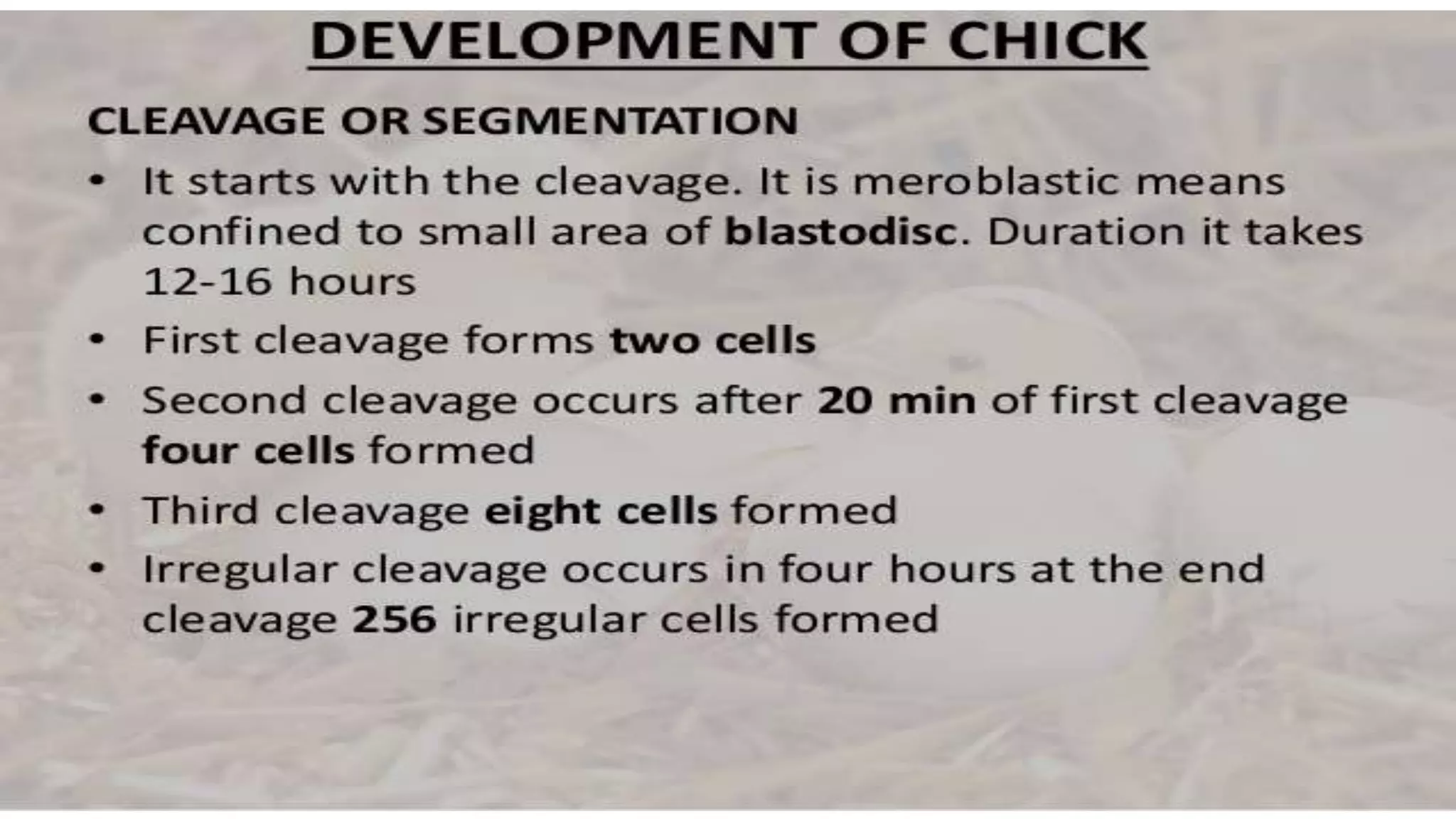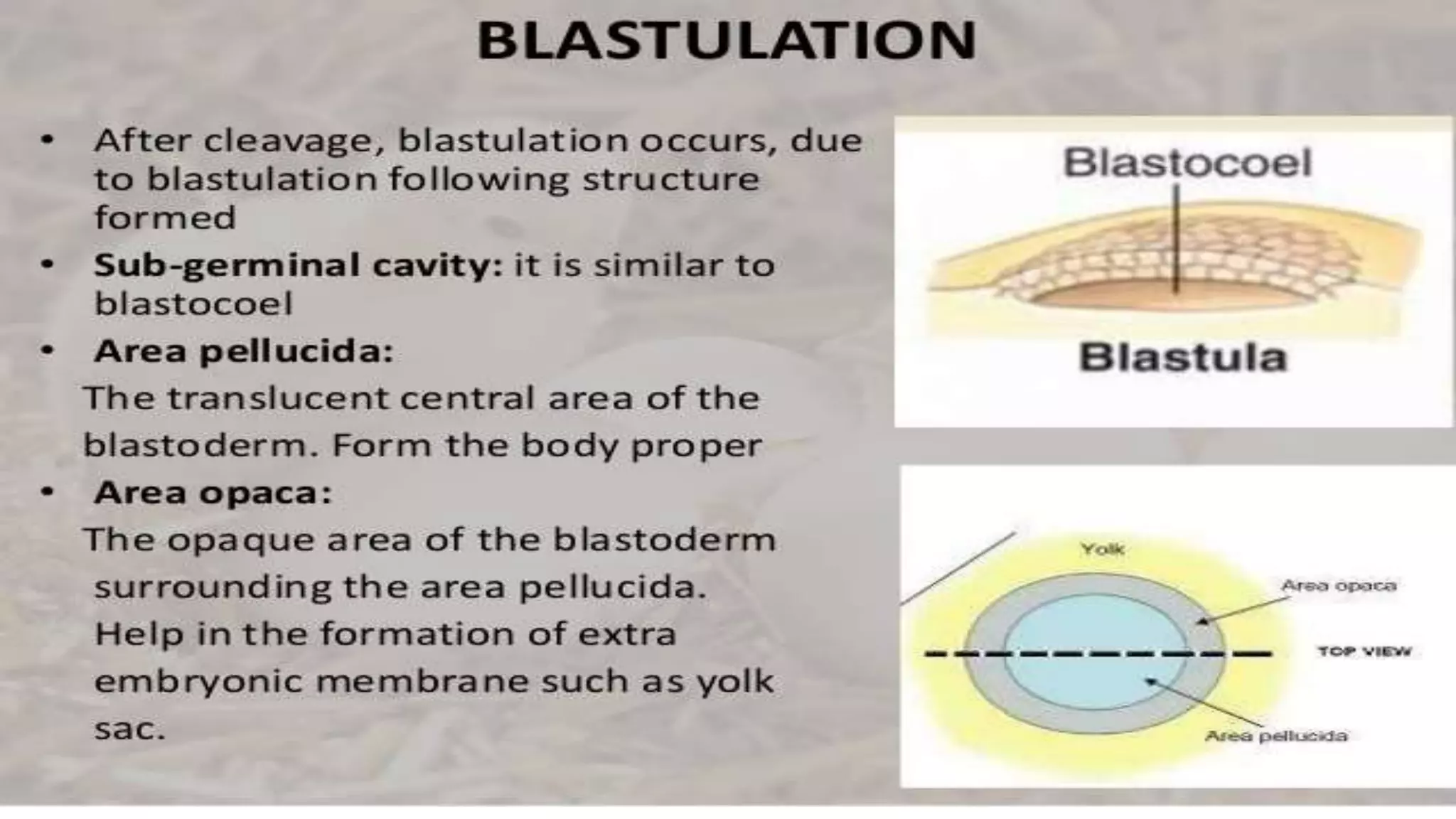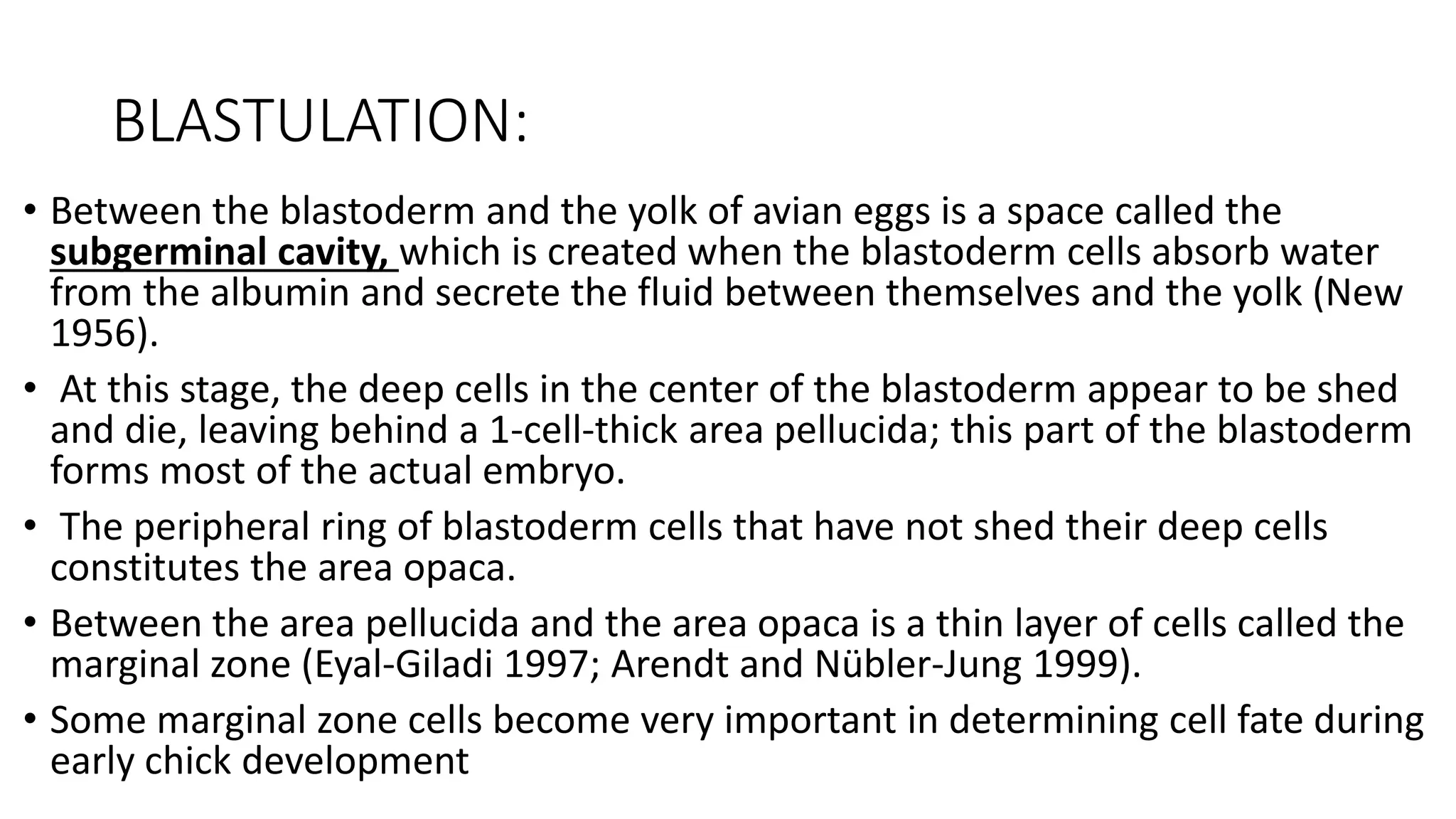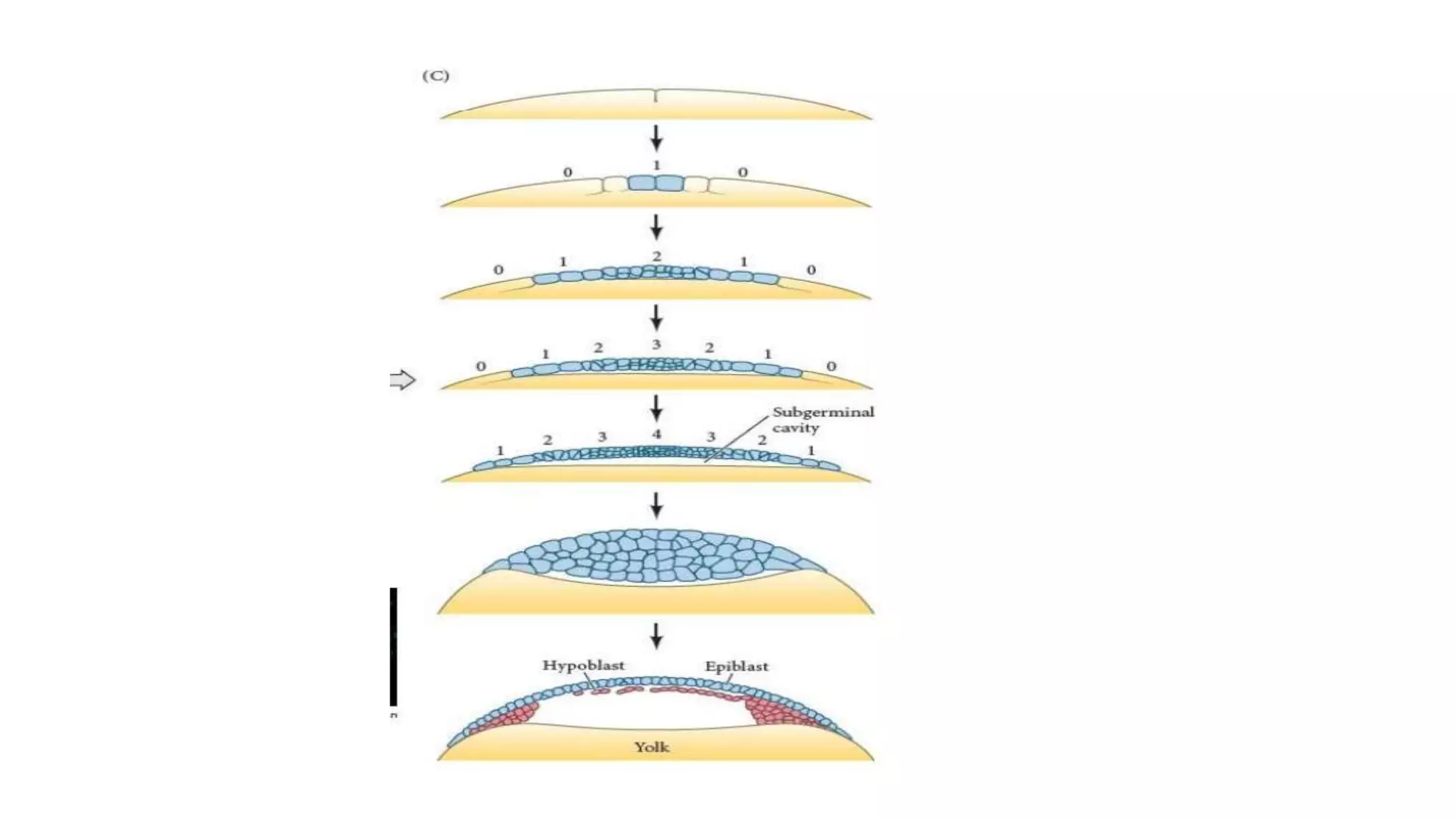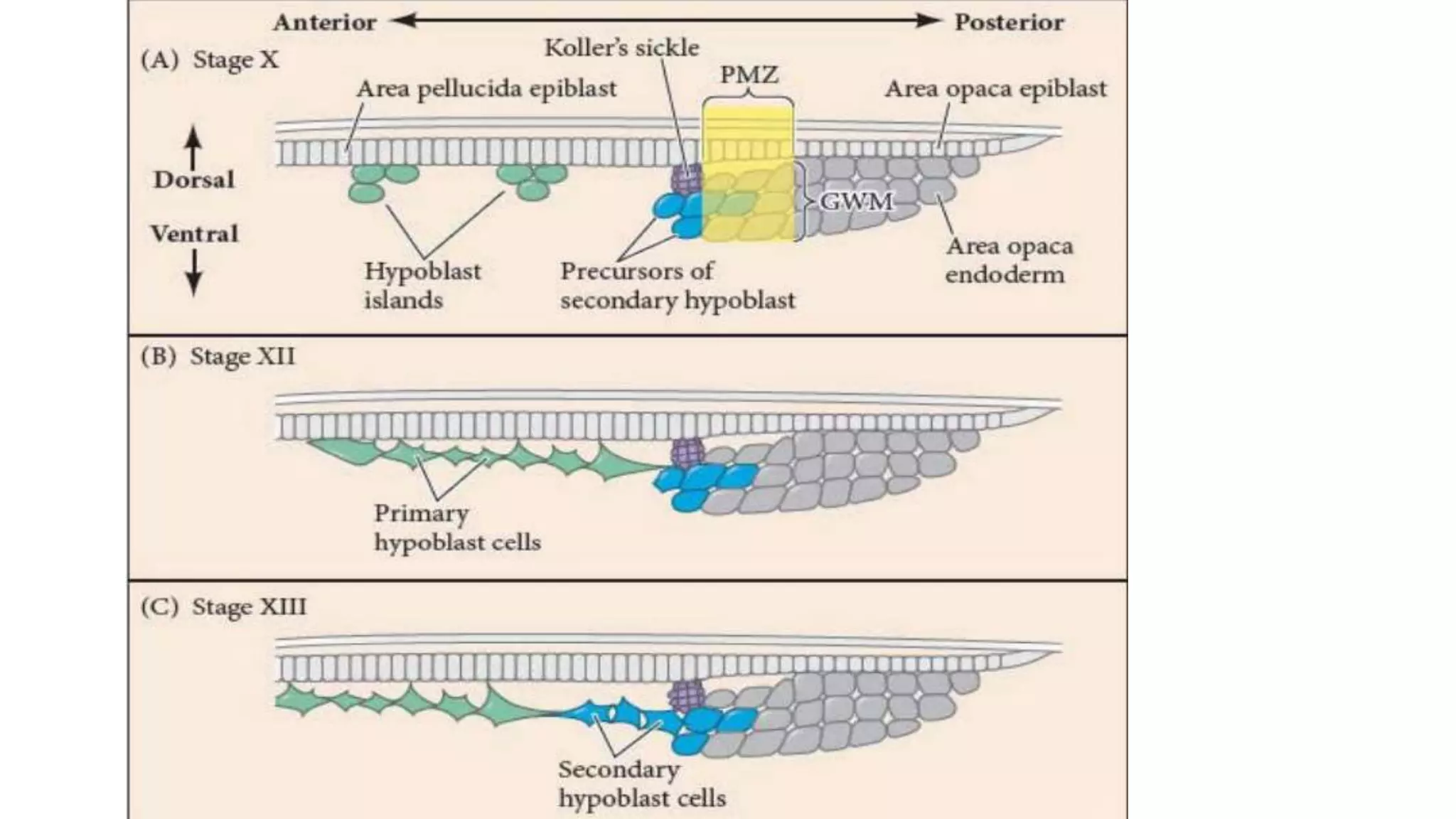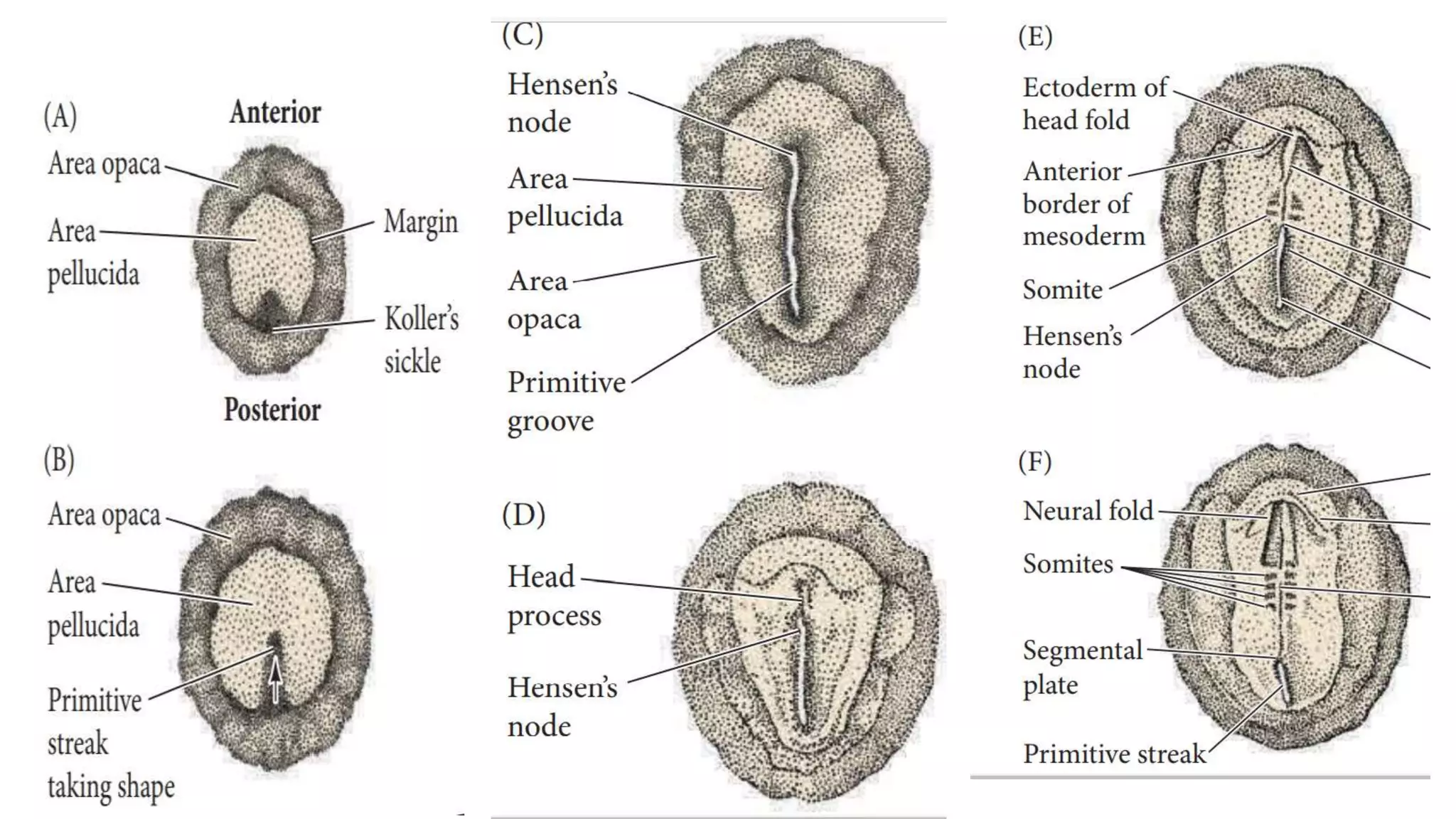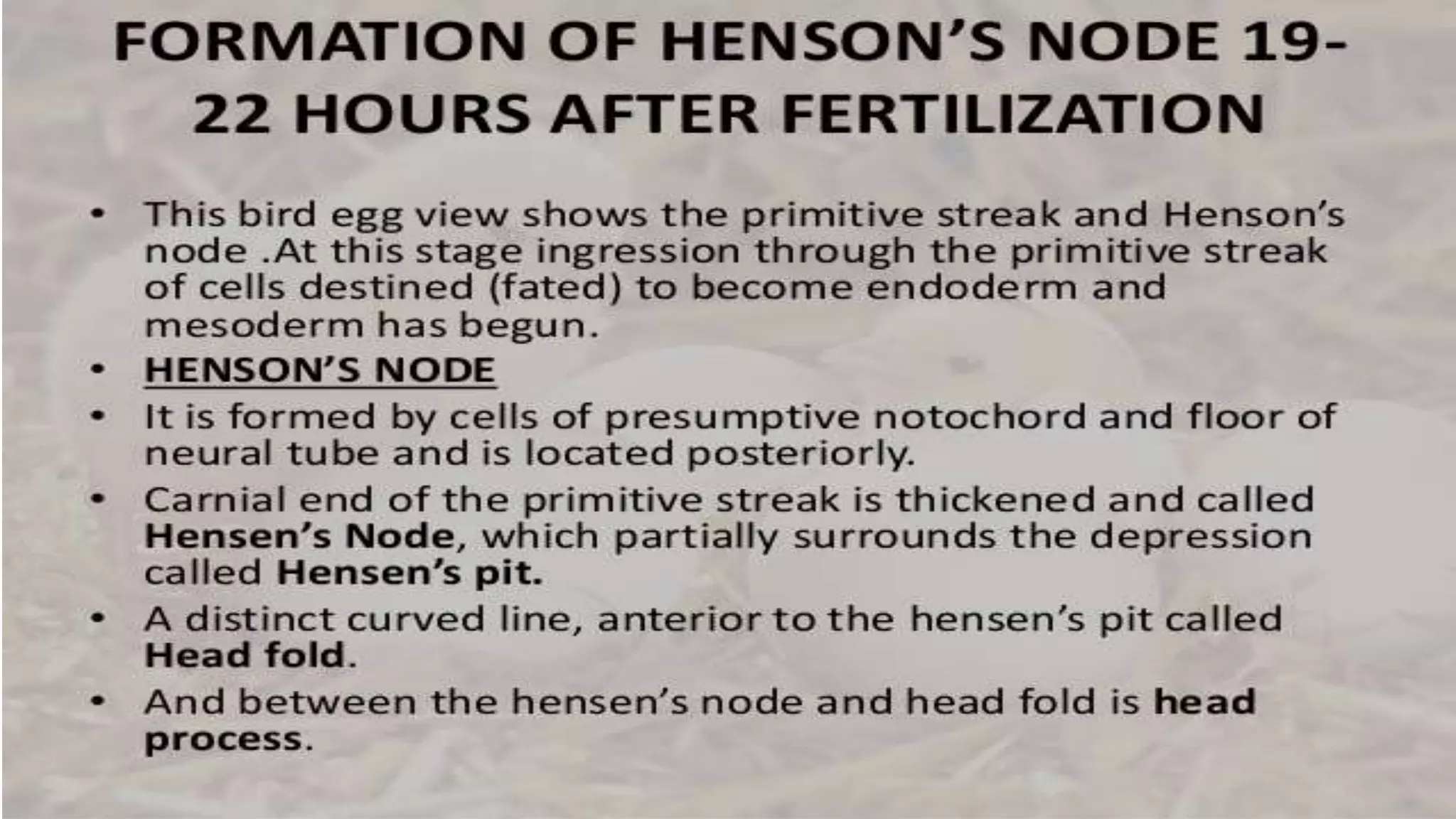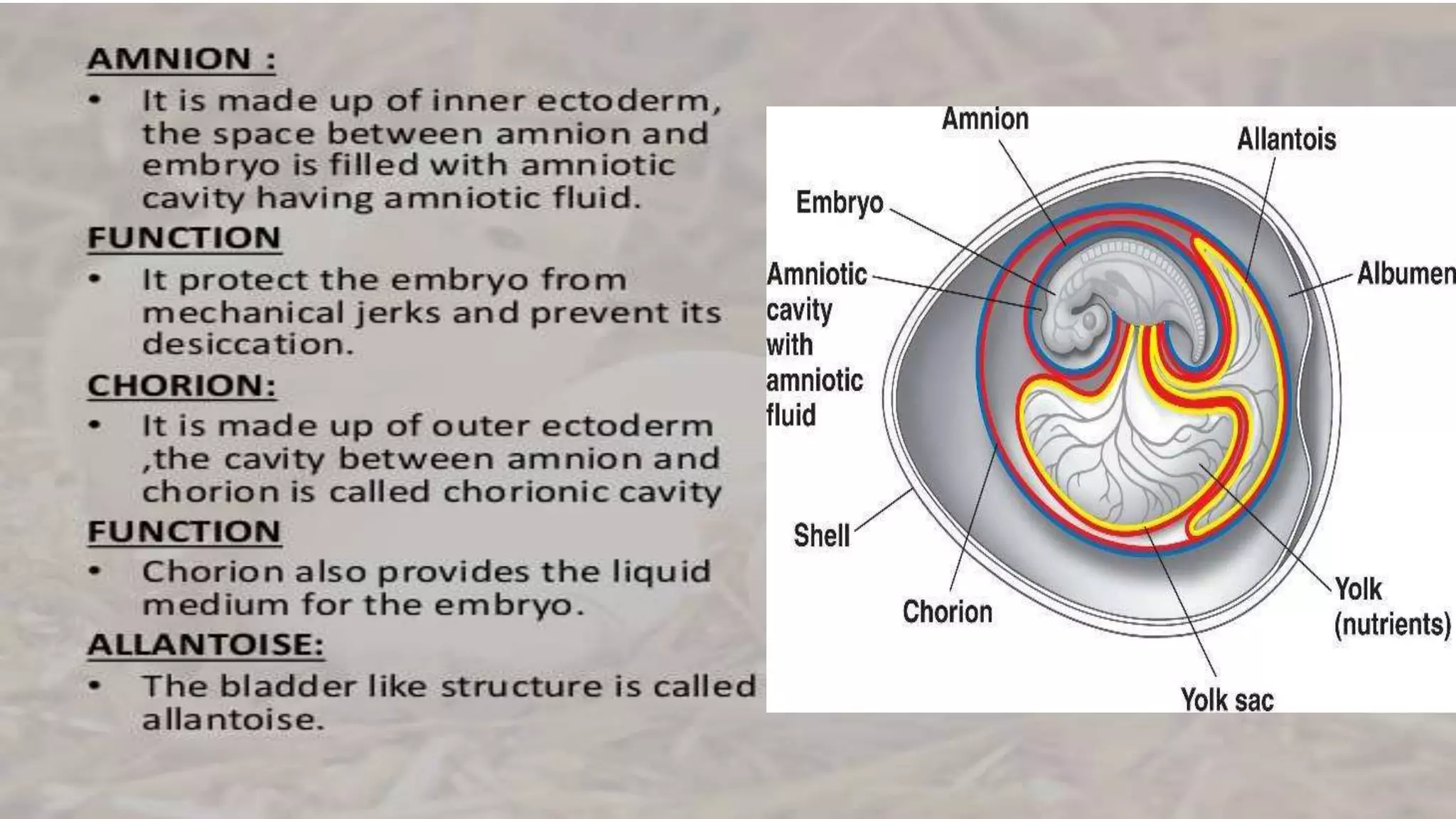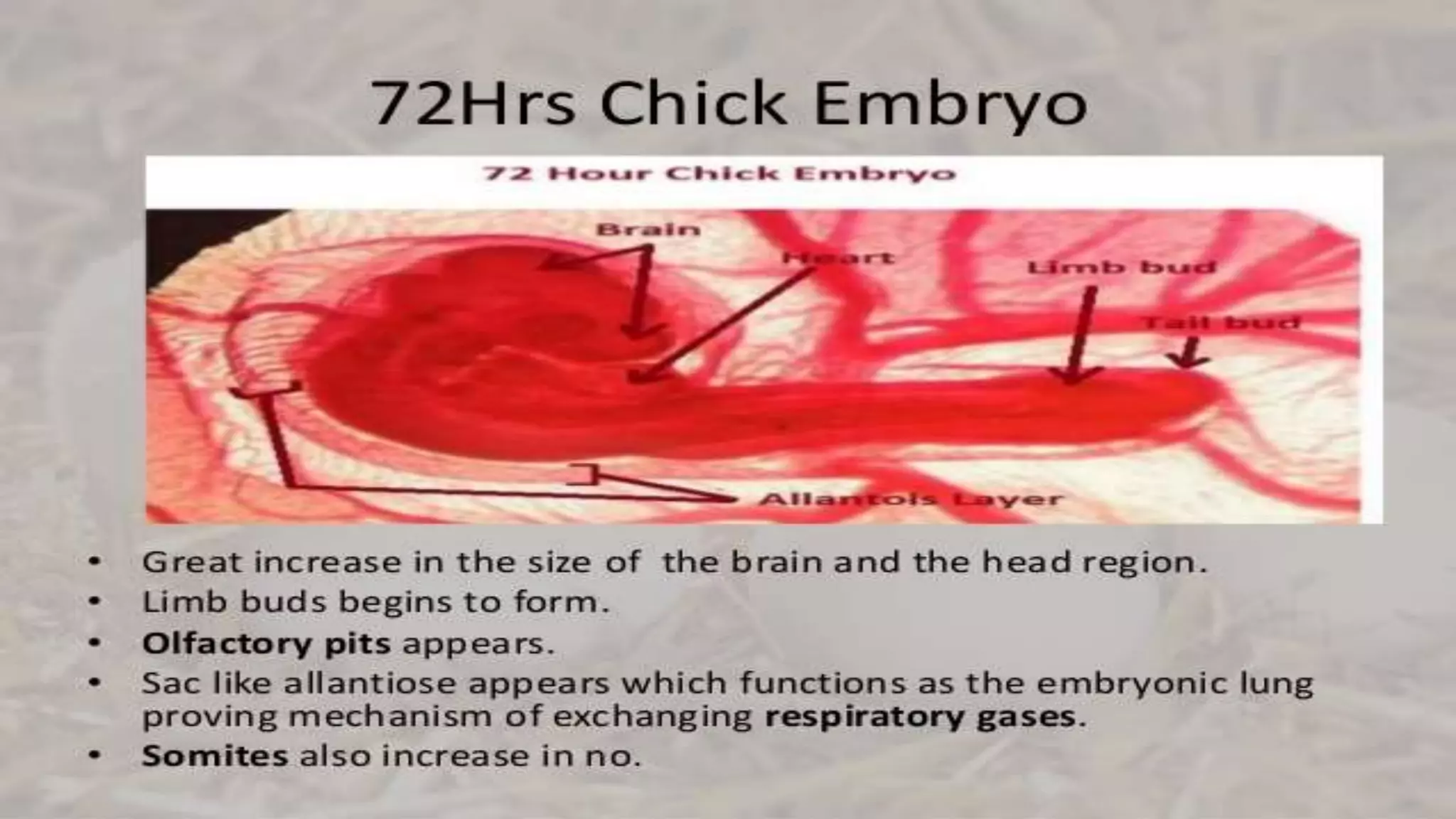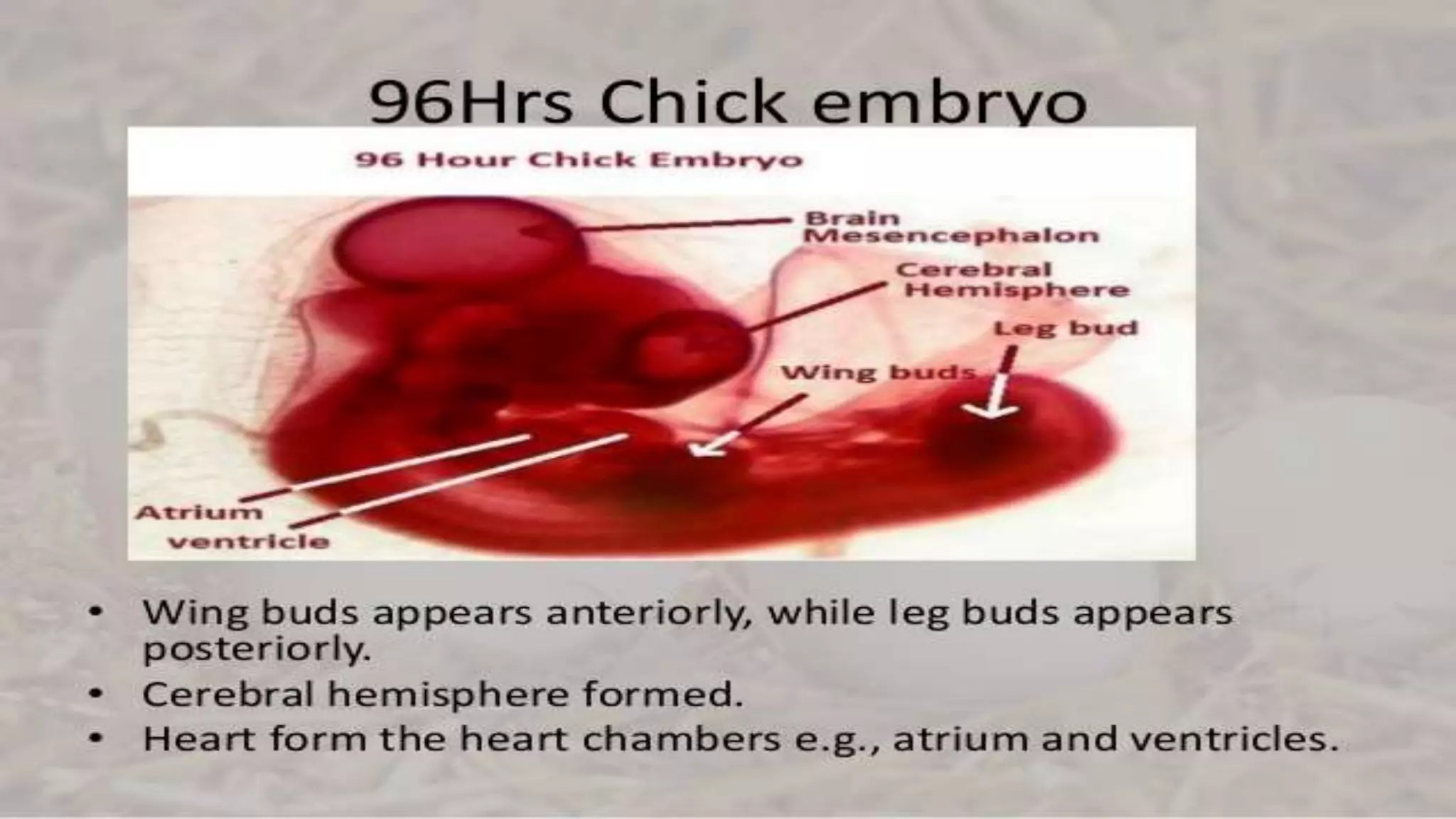The document summarizes key stages in early chick development:
1) Fertilization occurs internally in the oviduct, followed by cleavage and the beginning of gastrulation even before egg laying.
2) Blastulation involves the formation of the blastoderm layers and subgerminal cavity.
3) Gastrulation continues after laying, forming the primitive streak which elongates toward the head region through cell migration.
4) Cells migrate through the streak to form the endoderm and mesoderm, and the ectoderm covers the embryo through epiboly. Axis specification establishes bilateral symmetry.

